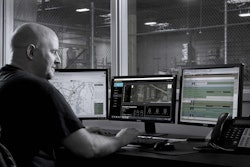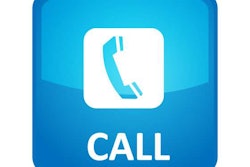I believe I’d be pretty close in estimating that somewhere around 90 percent of owner-ops, and 75 percent of company drivers, keep some kind of record about their experiences at shippers and receivers. I know George has had a notebook of “will do, won’t do without double the rate, and never again” for as long as I can remember. The information in that notebook was hard-earned, it took experience to compile it, and you can bet we lost money on the “never agains.”
There are a myriad of Facebook pages and other social media outlets referencing “the good, the bad and the ugly” as far as brokers and agents go, but nowhere is there a vetted source of information about all the things drivers learn the hard way.
 The Dock411 app crowd-sources reviews of shipper/receiver locations, among other things.
The Dock411 app crowd-sources reviews of shipper/receiver locations, among other things.Make that past tense. Nowhere was there a vetted source of information about all the things drivers learn the hard way. Now there is. And it’s a pretty dang awesome idea.
Daniel Serewicz was drawn to warehouse design and management after college, and soon found a job managing a warehouse. The facility was older than the GPS mapping abilities for it, and Daniel noticed a lot of drivers having a hard time finding the entrance. He wondered why they didn’t have that information – so he did the most logical thing and started asking about it.

He got together with some folks, did some research, and found that there was no clearinghouse of ancillary information available for drivers. No way for them to find out if the dock was a mile from the actual address, or if the facility had restrooms available, or if they allowed the driver to have pets. All the things people who actually drive these routes and make these deliveries need to know.
He also found that 70 percent of the drivers who responded to surveys said they had lost time or money (which are actually one in the same) due to unforeseen issues at the drop or pick location for freight, and that’s something I can get behind. It’s happened to us. It’s the reason for the notebook.
So Daniel and his partner, Eric Weidel , hired a coder and set to work on an app that compiled this information in one place, using crowdsourcing and their own research, to help drivers avoid the unforeseen, and hopefully, enable a platform in which shippers and receivers would be held accountable for dock times.
That was two years ago. The first version has come and gone. They learned a lot and, more importantly, they listened to the drivers using the first version, to improve and roll out the second version of Dock411, something all parties involved in the development and design are proud of.
Now, we all know crowdsourcing isn’t always the most reliable method of getting information. There’s always one Sullen Sully who has a bad day and rips a new one over something that really isn’t the shipper or receiver’s fault — or under their control. It happens. It’s also hard for people who don’t have anything to do with trucking to verify that kind of information, so this app goes over and above by having all the information funneled directly into what they call “The Forge.”
Here’s where I really got jazzed about this app.
“The Forge” is what the folks at Dock411 call their team of trucking experts, made up entirely of retired drivers, disabled drivers, or people who have extensive experience in trucking, as drivers. These folks vet and verify information before it’s made public on the app. You know when you use this app that the information is not only posted by a driver, but verified by one. And that’s big stuff.
The app can be found in both Apple and Google Play stores, and it’s free to drivers. There is an ad-free version for a fee, but it doesn’t change the access or information contained in the app. Daniel tells me, in order to make the app fully functional, they need roughly 10,000 people to sign up, and they’re about halfway there. There’s a web version launching in the next few weeks, and it will also be free to drivers.
This is an exciting new platform, I’m interested to follow the progress of. Daniel and the team have very thoughtfully constructed their business model, and I hope their hard work pays off. Check it out – let them know what you think.
Good luck, Dock411!










